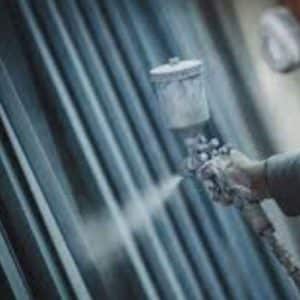Description
Solvents are an essential component in paint formulations, serving various functions such as thinning the paint, aiding in application, and facilitating the evaporation of volatile components. The choice of solvent depends on the type of paint, the desired application method, and regulatory considerations. Here are common types of solvents used in paint formulations:
1. Mineral Spirits (White Spirits):
- Type: Petroleum-based solvent.
- Applications:
- Commonly used in oil-based paints and varnishes.
- Used as a thinner for cleaning brushes and equipment.
2. Turpentine:
- Type: Derived from pine trees.
- Applications:
- Traditional solvent for oil-based paints and varnishes.
- Used as a thinner and brush cleaner.
3. Acetone:
- Type: Ketone solvent.
- Applications:
- Commonly used in lacquers, thinners, and nail polish removers.
- Fast evaporation rate makes it suitable for quick-drying formulations.
4. Methyl Ethyl Ketone (MEK):
- Type: Ketone solvent.
- Applications:
- Used in specialty coatings, adhesives, and as a high-strength industrial solvent.
5. Isopropanol (Isopropyl Alcohol):
- Type: Alcohol solvent.
- Applications:
- Commonly used in water-based paints and inks.
- Used as a cleaner and degreaser.
6. Ethyl Acetate:
- Type: Ester solvent.
- Applications:
- Used in lacquers, varnishes, and some industrial coatings.
- Provides moderate evaporation rate.
7. Xylene:
- Type: Aromatic hydrocarbon solvent.
- Applications:
- Used in enamels, varnishes, and specialty coatings.
- Provides high solvency and evaporation rate.
8. Toluene:
- Type: Aromatic hydrocarbon solvent.
- Applications:
- Commonly used in high-performance coatings and industrial applications.
- Provides high solvency and evaporation rate.
9. Naphtha:
- Type: Petroleum-based solvent.
- Applications:
- Used in industrial coatings, wood finishes, and cleaning formulations.
10. Propylene Glycol Methyl Ether (PM Acetate):
- Type: Glycol ether solvent.
- Applications:
- Used in water-based coatings and as a coalescing agent.
- Provides slow evaporation.
Considerations for Solvent Selection:
- Paint Formulation Compatibility: Ensure that the selected solvent is compatible with other components in the paint formulation.
- Evaporation Rate: Different solvents have varying evaporation rates, impacting drying time and application characteristics.
- VOC Regulations: Consider solvent choices based on volatile organic compound (VOC) regulations and environmental standards.
- Health and Safety: Be aware of the health and safety considerations associated with the use of specific solvents, including flammability and toxicity.
In recent years, there has been a growing emphasis on developing low-VOC and environmentally friendly paints, leading to increased use of water-based formulations and alternative solvents. The choice of solvent is a crucial aspect of paint formulation and should be aligned with the intended application, performance requirements, and regulatory standards.
Thinners and Reducers:
Thinners and reducers are substances used to modify the viscosity of paint, making it easier to apply and improving its flow and leveling characteristics. While these terms are sometimes used interchangeably, they can have slightly different meanings depending on the context. Here’s an overview of thinners and reducers for paint:
- Paint Thinners:
- Function:
- Thins the consistency of paint to improve application.
- Cleans painting tools such as brushes and rollers.
- Common Types:
- Mineral spirits (white spirits): Common for oil-based paints.
- Turpentine: Traditional thinner for oil-based paints.
- Acetone: Common in lacquers and some industrial coatings.
- Applications:
- Primarily used with oil-based paints, varnishes, and enamels.
- Reduction Agents or Reducers:
- Function:
- Reduce the viscosity of coatings for improved flow and leveling.
- Often used with automotive and industrial coatings.
- Common Types:
- Lacquer thinners: Suitable for lacquer-based coatings.
- Urethane reducers: Used with urethane-based coatings.
- Enamel reducers: Compatible with enamel paints.
- Applications:
- Commonly used in the automotive and industrial painting industries.
Considerations for Thinners and Reducers:
- Compatibility: Ensure compatibility between the chosen thinner or reducer and the specific type of paint being used.
- Application Method: Different thinners and reducers may be recommended based on the application method (spraying, brushing, rolling).
- Evaporation Rate: Consider the evaporation rate of the thinner or reducer, which can affect drying time and application characteristics.
- VOC Content: Be aware of the volatile organic compound (VOC) content, especially if working in areas with strict environmental regulations.
Examples of Common Thinners and Reducers:
- Mineral Spirits (White Spirits):
- Function: Thinning oil-based paints, cleaning tools.
- Application: Oil-based paints, enamels, varnishes.
- Lacquer Thinner:
- Function: Thinning lacquer-based paints, cleaning spray equipment.
- Application: Lacquer-based coatings, some automotive paints.
- Urethane Reducer:
- Function: Reducing viscosity of urethane-based coatings.
- Application: Automotive urethane paints, industrial coatings.
- Acetone:
- Function: Fast-drying thinner for lacquers and some industrial coatings.
- Application: Lacquers, certain industrial coatings.
- Turpentine:
- Function: Thinning oil-based paints, traditional paint thinner.
- Application: Oil-based paints, varnishes.
- Enamel Reducer:
- Function: Reducing viscosity of enamel-based paints.
- Application: Enamel paints, some industrial coatings.
It’s essential to follow the manufacturer’s recommendations for the specific paint product being used, as well as for the associated thinners or reducers. Using the correct thinning agent is crucial for achieving the desired application properties and maintaining the quality of the paint coating.















Reviews
There are no reviews yet.